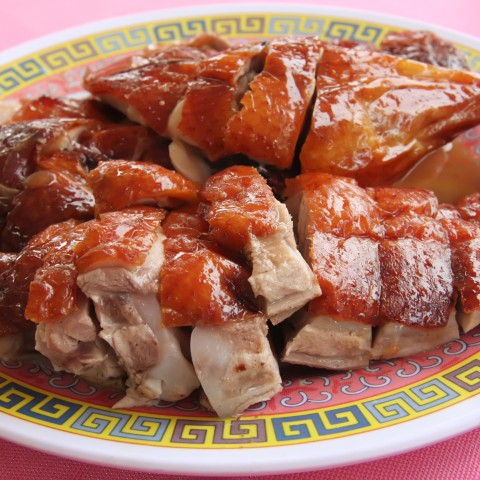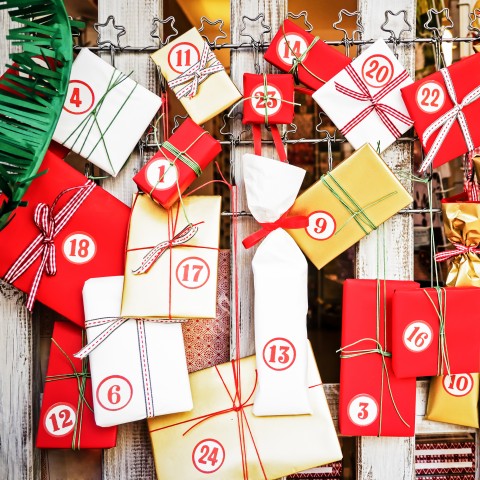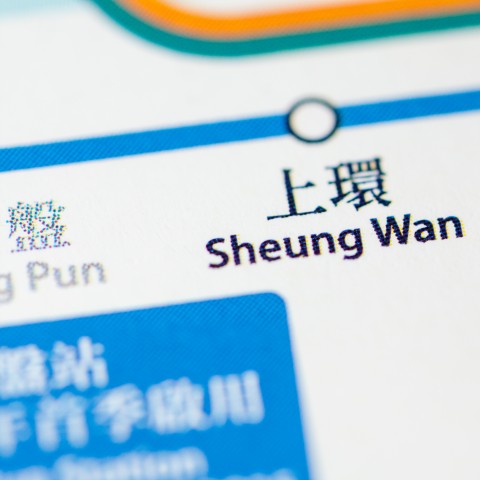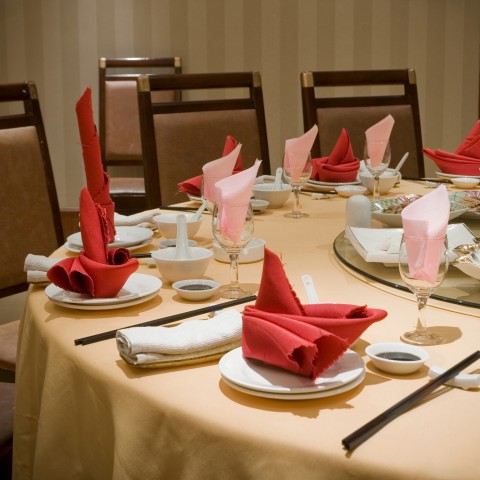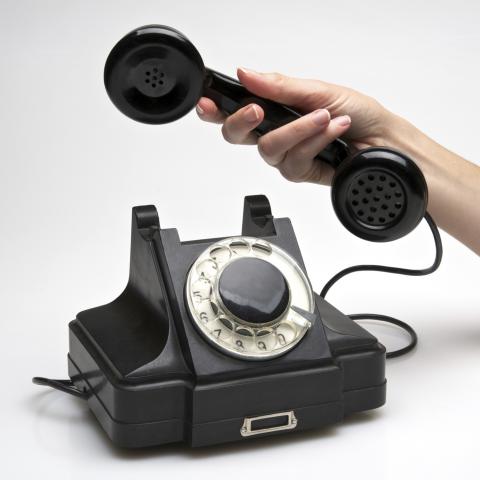Learning Cantonese is a headache to many—after all, with nine tones and 20k+ characters, Cantonese is one of the most difficult languages to master! But, with the right tools, you can certainly learn Cantonese a lot quicker and more effectively—in this case, those tools would be a great Cantonese course and the best Netflix Hong Kong shows.
Watching shows and movies in Cantonese on Netflix is a great way to sharpen language skills. Without even noticing, you’ll end up understanding the spoken language a lot better, and improve your pronunciation simply because you’ve gained familiarity with Cantonese as a whole.
Do you want to learn Cantonese on Netflix, while also learning more about the Hong Kong culture? Here are ten Netflix Hong Kong shows for you to work through in your spare time!

Table of Contents
- S Storm
- Vulgaria
- Initial D
- Cold War
- Royal Tramp
- The Midnight After
- A Complicated Story
- Justice, My Foot!
- Sixty Million Dollar Man
- OCTB
- Bonus: More Cantonese TV Shows and Movies!
- How CantoneseClass101.com Can Help You Learn More Cantonese
1. S Storm
- Cantonese Title: S風暴
- Romanization: S fung1 bou6
- Director: David Lam
- Stars: Louis Koo; Julian Cheung; Vic Chou
S Storm is a 2016 crime action movie, and the second film in the Storm film series, following 2014’s Z Storm.
Currently one of the best Cantonese Netflix films, S Storm depicts a classic run-in between the Independent Commission Against Corruption (a.k.a. ICAC) and the Hong Kong Police Force, which was triggered by the murder of the trader by a lone assassin. William Luk from ICAC refuses to disclose any information regarding the murder case to Julian Cheung, the chief investigator of the case from the Hong Kong police, even though he witnessed the incident.
The story continues to unfold as the police uncover that the murder case was actually tied to illegal bookmaking on football betting, and an international crime syndicate…
1- Related Words & Phrases in the Show:
- Character: 廉政公署
Romanization: lim4 zing3 gung1 cyu5
Meaning: Independent Commission Against Corruption - Character: 貪污
Romanization: taam1 wu1
Meaning: Corruption - Character: 兇殺案
Romanization: hung1 saat3 ngon3
Meaning: Murder case - Character: 犯罪
Romanization: faan6 zeoi6
Meaning: Commiting a crime - Character: 調查
Romanization: diu6 caa4
Meaning: Investigation
2. Vulgaria
- Cantonese Title: 低俗喜劇
- Romanization: dai1 zuk6 hei2 kek6
- Director: Ho-Cheung Pang
- Stars: Chapman To; Kristal Tin; Ronald Cheng
Looking for Cantonese films on Netflix to make you laugh? Vulgaria is a 2012 comedy that tells the story of how a divorced movie producer strives to fulfill his daughter’s dream of seeing him being interviewed by a major HK TV broadcaster, despite the fact that he’s poor and struggling to make alimony payments to his ex-wife…
1- Related Words & Phrases in the Show:
- Character: 喜劇
Romanization: hei2 kek6
Meaning: Comedy - Character: 女兒
Romanization: neoi5 ji4
Meaning: Daughter - Character: 監製
Romanization: gaam1 zai3
Meaning: Movie producer - Character: 婚姻
Romanization: fan1 jan1
Meaning: Marriage - Character: 電影
Romanization: din6 jing2
Meaning: Movie
3. Initial D
- Cantonese Title: 頭文字D
- Romanization: tau4 man4 zi6 D
- Director: Andrew Lau; Alan Mak
- Stars: Shawn Yue; Edison Chen; Jay Chou
Initial D, released in 2005, is an action film adapted from the Japanese Initial D manga series. The movie is about Takumi Fujiwara, a high school student, who has decided to focus on drift racing after winning his first competition. This is a sport he unknowingly perfects while delivering tofu with his father’s Toyota AE86…
1- Related Words & Phrases in the Show:
- Character: 父親
Romanization: fu6 can1
Meaning: Father - Character: 豆腐
Romanization: dau6 fu6
Meaning: Tofu - Character: 漂移
Romanization: piu1 ji4
Meaning: Drifting - Character: 汽車
Romanization: hei3 ce1
Meaning: Car - Character: 擊敗
Romanization: gik1 baai6
Meaning: Defeat
4. Cold War
- Cantonese Title: 寒戰
- Romanization: hon4 zin3
- Director: Longman Leung; Sunny Luk
- Stars: Aaron Kwok; Tony Ka Fai Leung; Charlie Yeung
Cold War—the opening film at the 17th Busan International Film Festival—is a 2012 Hong Kong police thriller film. Its name derives from the code name used in the police operation, and the film has a sequel called Cold War 2.
During the investigation of a missing Hong Kong Police Force van, they find that the terrorists possess detailed knowledge of the police’s procedures and can always plan several steps ahead. In the absence of the Chief Commissioner, the Deputy Commissioner M.B. Lee leads an operation code-named “Cold War,” and declares a state of emergency…
1- Related Words & Phrases in the Show:
- Character: 警隊
Romanization: ging2 deoi2
Meaning: Police force - Character: 副處長
Romanization: fu3 cyu3 zoeng2
Meaning: Deputy Commissioner - Character: 行動
Romanization: hang4 dung6
Meaning: Operation - Character: 贖金
Romanization: suk6 gam1
Meaning: Ransom - Character: 代號
Romanization: doi6 hou6
Meaning: Code name
5. Royal Tramp
- Cantonese Title: 鹿鼎記
- Romanization: luk6 ding2 gei3
- Director: Jing Wong
- Stars: Stephen Chow; Man Cheung; Chingmy Yau
Royal Tramp is a 1992 comedy based on Louis Cha‘s novel The Deer and the Cauldron, and it stars the famous Stephen Chow, who played the protagonist Wai Siu-bo.
The story revolves around Wai Siu-bo, resourceful and cunning, who was made a member of the Heaven and Earth Society after rescuing its leader. Yet he performs poorly in his first assignment, and is subsequently made a servant to the very person the Heaven and Earth Society aim to overthrow…
1- Related Words & Phrases in the Show:
- Character: 機智
Romanization: gei1 zi3
Meaning: Smart - Character: 決鬥
Romanization: kyut3 dau3
Meaning: Battle - Character: 皇帝
Romanization: wong4 dai3
Meaning: Emperor - Character: 皇宮
Romanization: wong4 gung1
Meaning: Royal Palace
6. The Midnight After
- Cantonese Title: 那夜凌晨,我坐上了旺角開往大埔的紅VAN
- Romanization: naa5 je6 ling4 san4, ngo5 co5 soeng5 liu5 wong6 gok3 hoi1 wong5 daai6 bou3 dik1 hung4 VAN
- Director: Fruit Chan
- Stars: Suet Lam; Lam Wong; Cheuk-Ling Tin
The Midnight After is a 2014 satirical horror comedy film based on the web-novel Lost on a Red Mini Bus to Taipo. The movie begins with seventeen people taking a Hong Kong minibus to Tai Po. After the minibus enters a tunnel, a passenger notices that the traffic has disappeared and the city is quieter than usual….
1- Related Words & Phrases in the Show:
- Character: 凌晨
Romanization: ling4 san4
Meaning: Midnight - Character: 小巴
Romanization: siu2 baa1
Meaning: Minibus - Character: 隧道
Romanization: seoi6 dou6
Meaning: Tunnel - Character: 消失
Romanization: siu1 sat1
Meaning: Disappear - Character: 神秘
Romanization: san4 bei3
Meaning: Mysterious
7. A Complicated Story
- Cantonese Title: 一個複雜故事
- Romanization: jat1 go3 fuk1 zaap6 gu3 si6
- Director: Kiwi Chow
- Stars: Jacky Cheung; Zhi-Ying Zhu; Stephanie Che
A Complicated Story is a 2013 film based on the novel with the same title. It’s about Liu Yazi, a student from Mainland China in a Hong Kong University, who has decided to become a surrogate mother to pay for her brother’s medical expenses. However, she’s asked to terminate the contract during her pregnancy… One of the best Cantonese dramas on Netflix for language learners.
1- Related Words & Phrases in the Show:
- Character: 複雜
Romanization: fuk1 zaap6
Meaning: Complicated - Character: 代孕
Romanization: doi6 jan6
Meaning: Surrogacy - Character: 合約
Romanization: hap6 joek3
Meaning: Contract - Character: 秘密
Romanization: bei3 mat6
Meaning: Secret - Character: 學生
Romanization: hok6 saang1
Meaning: Student
8. Justice, My Foot!
- Cantonese Title: 審死官
- Romanization: sam2 sei2 gun1
- Director: Johnnie To
- Stars: Stephen Chow; Anita Mui; Man-Tat Ng
Justice, My Foot! is a 1992 film about a lawyer called Sung. Sung is intelligent and excellent in speech. By leveraging his talents and skills, he quickly becomes the best lawyer in the region. And he’ll do whatever it takes to win the case—even neglecting right and wrong. But, because of this, none of his newborns survive more than a year…
1- Related Words & Phrases in the Show:
- Character: 言語
Romanization: jin4 jyu5
Meaning: Speech - Character: 狀師
Romanization: zong6 si1
Meaning: Lawyer (ancient Chinese) - Character: 正義
Romanization: zing3 ji6
Meaning: Justice - Character: 賄賂
Romanization: kui2 lou6
Meaning: Bribery - Character: 勸告
Romanization: hyun3 gou3
Meaning: Persuasion
9. Sixty Million Dollar Man
- Cantonese Title: 百變星君
- Romanization: baak3 bin3 sing1 gwan1
- Director: Jing Wong; Wai Man Yip
- Stars: Stephen Chow; Gigi Leung; Man-Tat Ng
Sixty Million Dollar Man is a 1995 comedy, and one of the great Cantonese movies on Netflix of this genre. It revolves around a rich kid studying in Hawaii. Arrogant and powerful, he enjoys fooling people around him. Things change, however, when he meets a beautiful young lady…
1- Related Words & Phrases in the Show:
- Character: 作弄
Romanization: zok3 nung6
Meaning: Trick - Character: 夏威夷
Romanization: haa6 wai1 ji4
Meaning: Hawaii - Character: 富有
Romanization: fu3 jau5
Meaning: Rich - Character: 迷戀
Romanization: mai4 lyun2
Meaning: Obsess - Character: 同學
Romanization: tung4 hok6
Meaning: Classmate
10. OCTB
- Cantonese Title: 反黑
- Romanization: faan2 hak1
- Director: Jones Soong Pounh Chong
- Stars: Jordan Chan; Danny Chan; Ken Wong
OCTB, which stands for Organized Crime and Triad Bureau, is a 2017 drama series that takes you back to the 1980s and shows you what would happen when an undercover detective crosses paths with familiar faces in the mafia underworld…
1- Related Words & Phrases in the Show:
- Character: 黑社會
Romanization: haak1 se5 wui2
Meaning: Underworld - Character: 臥底
Romanization: ngo6 dai2
Meaning: Undercover - Character: 酒吧
Romanization: zau2 baa1
Meaning: Bar - Character: 手槍
Romanization: sau2 coeng1
Meaning: Handgun - Character: 警署
Romanization: ging2 cyu5
Meaning: Police station
11. Bonus: More Cantonese TV Shows and Movies!
Craving more Cantonese TV shows and movies after watching the ones above? Check out our recommendations on Hong Kong TV shows and movies!
12. How CantoneseClass101.com Can Help You Learn More Cantonese
We hope that you enjoy these shows improve your Cantonese along the way! Which of these Cantonese shows on Netflix do you want to watch first and why? Do you have any favorite Hong Kong media to share? Let us know in the comments!
With CantoneseClass101.com, you can have your daily dose of Cantonese whenever and wherever you want, through mobile apps, desktop software, and our website. We offer entertaining, engaging, and effective lessons on various aspects of the Cantonese language and culture.
Until now, we’ve delivered more than 750,000,000 lessons to thousands of happy students from all around the globe. You can learn Cantonese with over 1060 audio and video lessons delivered by our knowledgeable and energetic hosts, detailed PDF lesson notes, an abundance of vocabulary learning tools, spaced repetition flashcards, and a lively community to discuss the lessons with fellow learners. What are you waiting for? Download our lessons, enjoy our audio and video files, and start learning now!
And keep in mind that if you prefer a one-on-one learning approach and want to further accelerate your Cantonese learning, you can take advantage of our MyTeacher program!
Know that your hard work will pay off, and before you know it, you’ll be speaking Cantonese like a native!


























